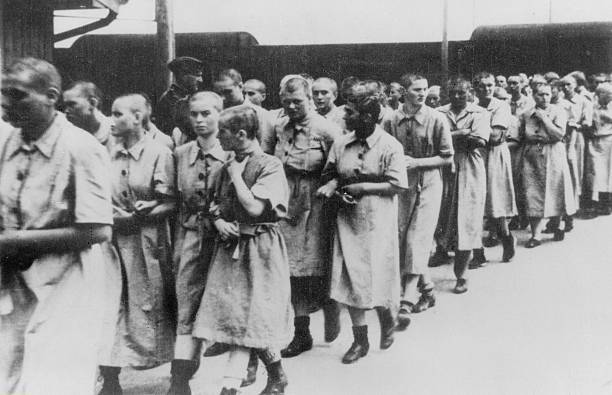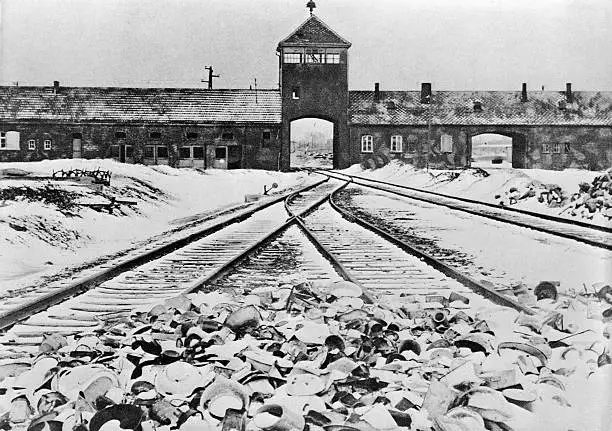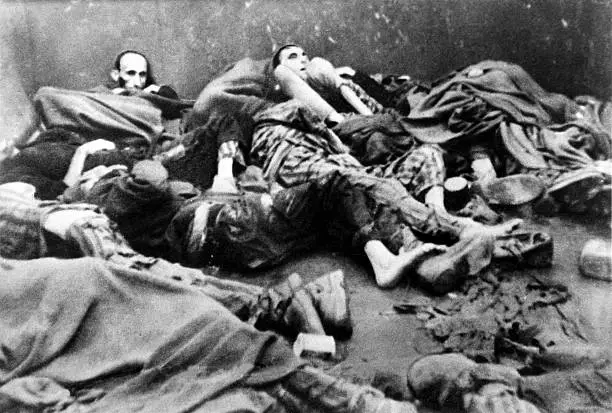Auschwitz: A Heartbreaking Memorial Of The Holocaust
Auschwitz-Birkenau is a complex of Nazi concentration camps located in Poland during World War II. It is widely considered to be the largest and most notorious of all the Nazi camps. The camp was established in 1940 as a detention center for Polish political prisoners but quickly expanded in size and scope as the Nazis implemented their “Final Solution,” a plan to systematically exterminate Jews and other groups they deemed undesirable. In this article, we will explore the history of Auschwitz-Birkenau, the experiences of those who were imprisoned there, and the significance of the site as a memorial to the atrocities of the Holocaust.

Germany, Third Reich – concentration camps 1939-45 Women at the train station ramp of Auschwitz concentration camp – around 1944.
The History of Auschwitz-Birkenau
Auschwitz-Birkenau was established in 1940 as a detention center for Polish political prisoners. The camp was located in the town of Oswiecim, which had been annexed by Nazi Germany following the invasion of Poland in 1939. The original camp, known as Auschwitz I, was set up in a former Polish army barracks and consisted of 20 brick buildings surrounded by barbed wire fences and guard towers.

Entrance to the German concentration camp of Auschwitz-Birkenau in Poland.
In 1941, the camp was expanded to include a second site, known as Birkenau or Auschwitz II. This camp was located approximately two miles from the main camp and included purpose-built gas chambers where hundreds of thousands of people were killed. Birkenau was also home to massive barracks where prisoners were housed in brutal conditions, with up to 1,000 people crammed into each building.
Throughout the war, more than 1.1 million people were killed at Auschwitz-Birkenau, the vast majority of whom were Jewish. Other groups who were targeted by the Nazis and sent to the camp included Romani people, Soviet prisoners of war, disabled individuals, and others deemed undesirable by the regime. In addition to those who were killed in the gas chambers, many prisoners died from disease, malnutrition, and overwork.

The Experiences of Those Imprisoned at Auschwitz-Birkenau
Life at Auschwitz-Birkenau was brutal and dehumanizing. Upon arrival at the camp, prisoners were subjected to a selection process, in which SS doctors decided who was fit to work and who would be sent to the gas chambers. Those deemed fit for work were tattooed with a serial number and sent to the barracks, where they were given ragged uniforms and subjected to forced labor in a variety of industries, including mining, construction, and manufacturing.
Conditions in the barracks were incredibly harsh, with prisoners given minimal food and water, little or no medical care, and forced to sleep on wooden planks with no bedding. The prisoners were also subjected to regular beatings and torture by the SS guards, who used a variety of methods to maintain control over the population.
Prisoners at Birkenau were also subjected to the horrors of the gas chambers, where they were stripped of their clothes and belongings before being led to their deaths. The gas chambers were disguised as shower rooms, and the victims were told they were going to be deloused before being led inside. Once the victims were inside, the SS guards would drop pellets of Zyklon B, a poisonous gas, through holes in the ceiling. The victims would die within minutes, and their bodies would be removed and burned in massive crematoria.
The Significance of Auschwitz-Birkenau as a Memorial
Today, Auschwitz-Birkenau stands as a powerful memorial to the atrocities committed during the Holocaust. The site has been preserved as a museum and memorial, with visitors able to tour the various parts of the former concentration and extermination camp. The museum provides a sobering reminder of the horrors that took place within its walls, with exhibits that include personal belongings of the victims, photographs, and written accounts of survivors.
Visiting Auschwitz-Birkenau is a deeply emotional experience for many people, and it is a pilgrimage site for Jews and non-Jews alike who seek to pay their respects to those who suffered and died there. The memorial serves as a reminder of the devastating consequences of prejudice and hatred, and the importance of standing up against such injustices.
As time passes and the number of Holocaust survivors dwindles, the memory of the atrocities committed at Auschwitz-Birkenau and other concentration camps must be kept alive. By preserving these sites and telling the stories of those who suffered there, we can honor their memory and ensure that the world never forgets the horrors of the Holocaust.
Conclusion: A Reminder of the Past and a Call to Action for the Future
Auschwitz-Birkenau is a haunting reminder of one of the darkest periods in human history. It is a place where unspeakable atrocities were committed, and where the lives of millions were brutally cut short. But it is also a place where we can learn from the past, and where we can be reminded of the importance of fighting against hatred and bigotry.
Visiting Auschwitz-Birkenau is a powerful experience that can be difficult and emotional, but it is also a crucial step towards ensuring that the world never forgets the atrocities committed during the Holocaust. By preserving this site and others like it, we can honor the memory of the victims and ensure that their stories are never forgotten.
As we move forward, it is up to all of us to continue the fight against prejudice and hatred and to ensure that the horrors of the past are never repeated. The memory of Auschwitz-Birkenau serves as a call to action for us all, urging us to stand up for what is right and to work towards a better, more just future for all.